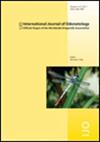蜻蜓飞行的历史
IF 1
4区 农林科学
Q3 ENTOMOLOGY
引用次数: 1
摘要
从化石记录中最早出现的时候起,蜻蜓显然采取了与其他昆虫群体不同的飞行方式。即使是表面上相似的神经翅目也不像蜻蜓那样飞行。飞行专业化使蜻蜓能够占据一系列的生态位,作为飞行昆虫的专门捕食者,大约有300米。本文章由计算机程序翻译,如有差异,请以英文原文为准。
History of dragonfly flight
From their earliest appearance in the fossil record, dragonflies have clearly taken a different approach to flight than other insect groups. Even the superficially similar Neuroptera do not fly like dragonflies. Flight specialisation has enabled dragonflies to occupy a range of niches, as specialised predators of flying insects, for around 300 My.
求助全文
通过发布文献求助,成功后即可免费获取论文全文。
去求助
来源期刊

International Journal of Odonatology
ENTOMOLOGY-
CiteScore
2.30
自引率
0.00%
发文量
15
审稿时长
>12 weeks
期刊介绍:
International Journal of Odonatology (IJO) is aimed at providing a publication outlet for the growing number of students of Odonata. It will address subjects such as the ecology, ethology, physiology, genetics, taxonomy, phylogeny and geographic distribution of species. Reviews will be by invitation, but authors who plan to write a review on a subject of interest to the journal are encouraged to contact the editor.
 求助内容:
求助内容: 应助结果提醒方式:
应助结果提醒方式:


